Incorporating greenery into your interior design can breathe new life into your space, offering a refreshing pop of color and a touch of nature’s tranquility. Whether you’re a novice just beginning to explore the world of home decor or a seasoned decorator with an eye for detail, adding plants doesn’t have to be a costly endeavor. Understanding the role of greenery in design is crucial; it not only enhances aesthetics but also purifies the air and boosts your mood. With a little creativity and resourcefulness, you can transform your home into a lush, vibrant sanctuary without breaking the bank.
In this article, we will explore five budget-friendly ways to infuse your interiors with greenery, proving that style and sustainability can go hand in hand. You’ll learn how to select the right plants for your environment, discover creative display ideas, and find affordable resources to cultivate your own indoor oasis. By the end, you’ll be equipped with practical tips and inspiration to create a verdant retreat that reflects your unique taste. Let’s embark on this green journey together, where every leaf and frond becomes part of your personal design story.
Choosing Affordable Indoor Plants
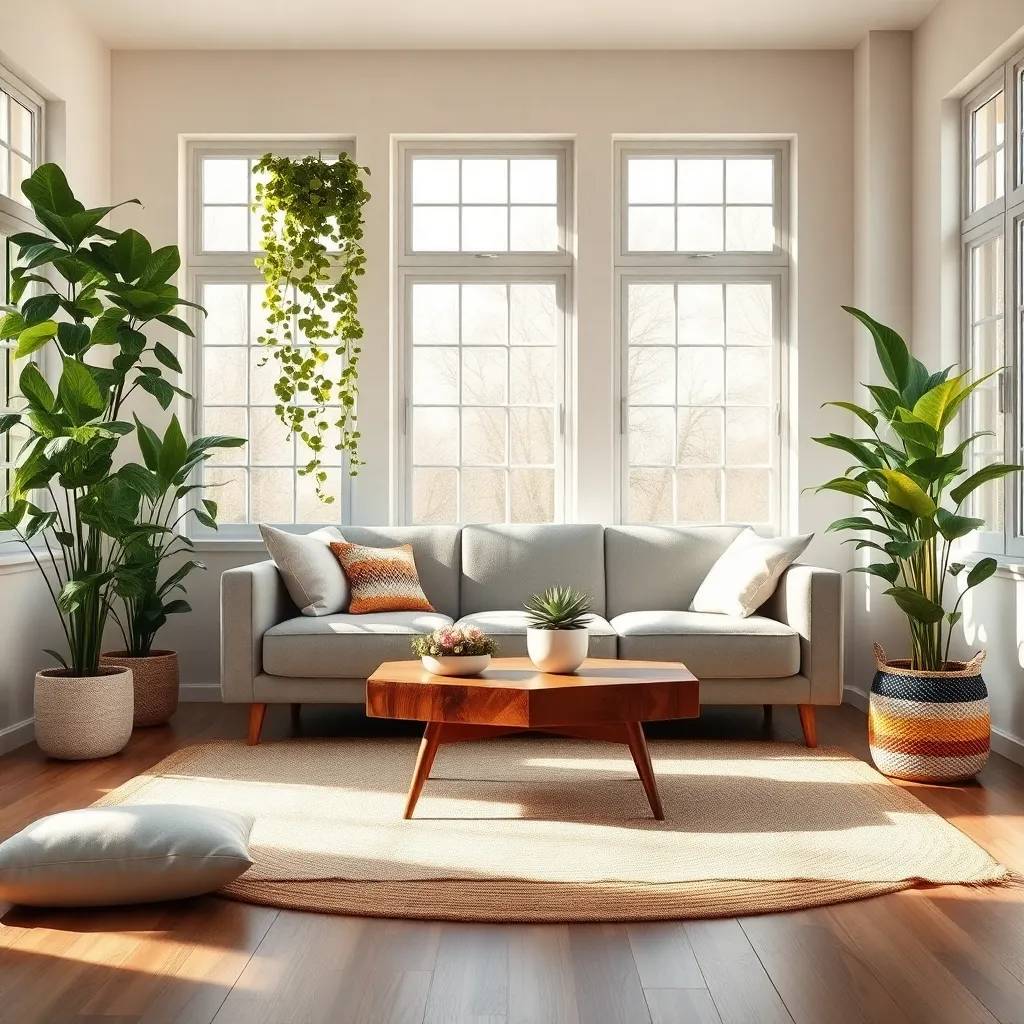
Incorporating indoor plants into your decor doesn’t have to break the bank. Start with affordable options like pothos, snake plants, or spider plants, which are not only inexpensive but also low-maintenance and versatile in various interior styles.
Place these plants strategically to maximize their impact and maintain their health. For instance, position snake plants in low-light corners to add a touch of greenery without the need for constant sunlight, while hanging pothos in macramé holders can create a vibrant vertical display.
Choose pots that complement your existing decor while keeping costs down. Consider using DIY painted terracotta pots or thrifted ceramic planters to add a personal touch and coordinate with your room’s color scheme.
Advanced decorators can experiment with grouping different plants to create a lush, layered look. Mix taller plants like fiddle leaf figs with smaller ones such as succulents to create a dynamic arrangement that draws the eye and adds depth to your space.
Utilizing Vertical Space Creatively
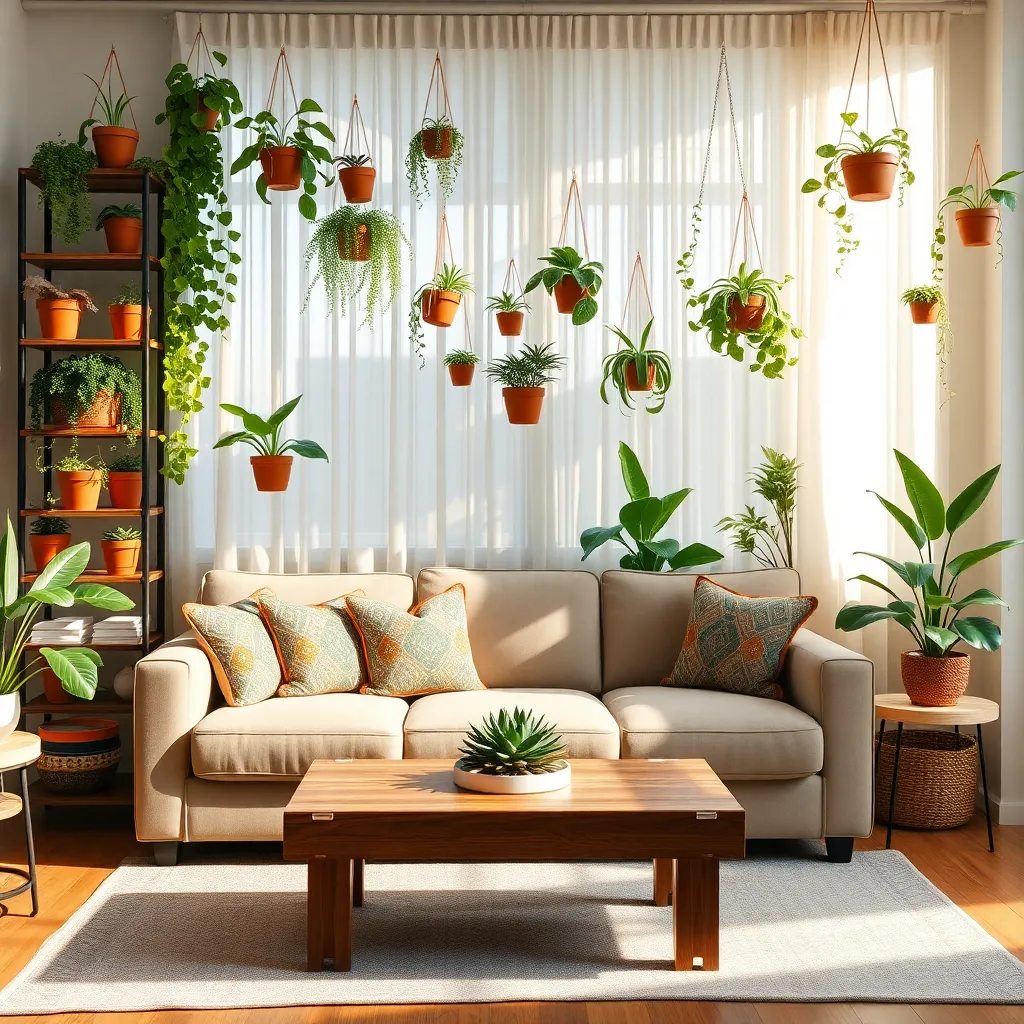
To creatively utilize vertical space, consider installing floating shelves for a modern and sophisticated look. These shelves not only provide storage but also allow you to display your favorite plants, creating a lush vertical garden.
Another strategy is to use hanging planters, which can be suspended from ceilings or wall-mounted brackets. This method is perfect for small spaces, as it frees up floor area while adding an eye-catching element to your décor.
For a more advanced approach, try implementing a vertical plant wall using modular panels. These panels can be customized with different plant varieties to suit your style and can serve as a striking focal point in any room.
In addition to plants, consider vertically stacking items like books or decorative objects to balance the greenery. This not only breaks the monotony but also adds a personal touch, making the space feel more lived-in and unique.
Incorporating Greenery in Small Spaces
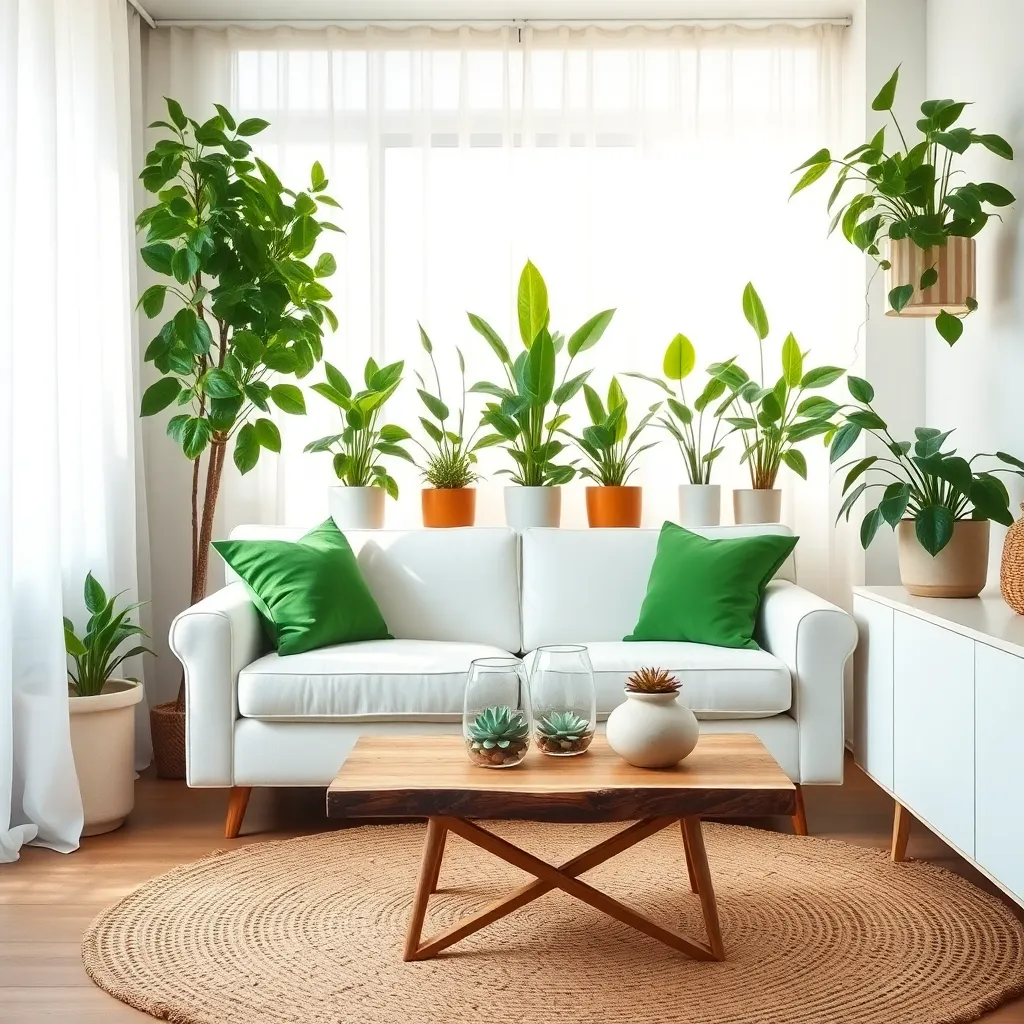
Incorporating greenery into small spaces can instantly refresh your home and improve air quality. Start by choosing compact plants like succulents or small ferns that thrive in limited areas and require minimal maintenance.
Consider using hanging planters to add greenery without consuming precious floor space. This technique not only elevates the aesthetic appeal but also draws the eye upward, creating the illusion of a taller room.
For those who prefer a more artistic approach, create a living wall with modular planters. These can be arranged in various patterns to suit your style, offering a dynamic and ever-changing piece of living art.
When space is at a premium, integrate plants into existing furniture. For example, a shelf with integrated planter boxes is perfect for showcasing greenery along with books and decorative items.
DIY Plant Decor Projects
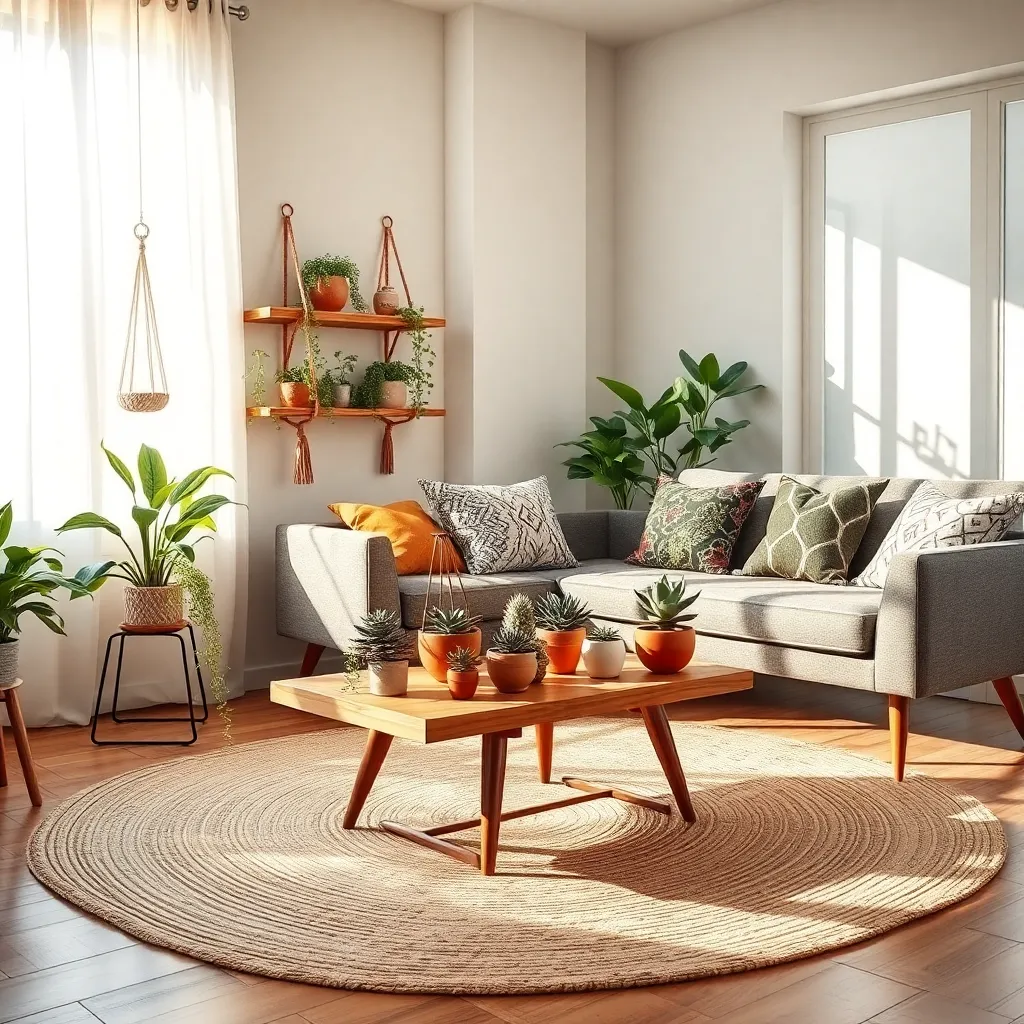
Creating your own plant decor projects is an excellent way to personalize your space while incorporating greenery. Start with a simple hanging macramé plant holder, which can add vertical interest to any room. Choose a sturdy cotton cord in a color that complements your existing decor, such as a neutral beige or a bold navy for contrast.
To craft a macramé plant holder, you’ll need basic knotting skills, which can be easily learned from online tutorials. Hang these holders in front of windows or in corners to bring life into otherwise unused spaces. For a more advanced project, consider crafting a living wall art piece using a wooden frame and small potted plants.
When designing a living wall, select a variety of small plants such as succulents, ferns, and air plants that require similar light and water conditions. Arrange the plants within the frame, ensuring each has enough room to grow without overcrowding. This project can transform a plain wall into a vibrant focal point, adding both texture and color.
Another delightful DIY idea is to upcycle old containers into unique plant pots. Use paint or decoupage techniques to add personality to these containers, making them perfect for small herbs or indoor flowers. Position these pots on kitchen windowsills or bookshelves to add a fresh, green touch to your everyday spaces.
Maintaining Indoor Plants on a Budget
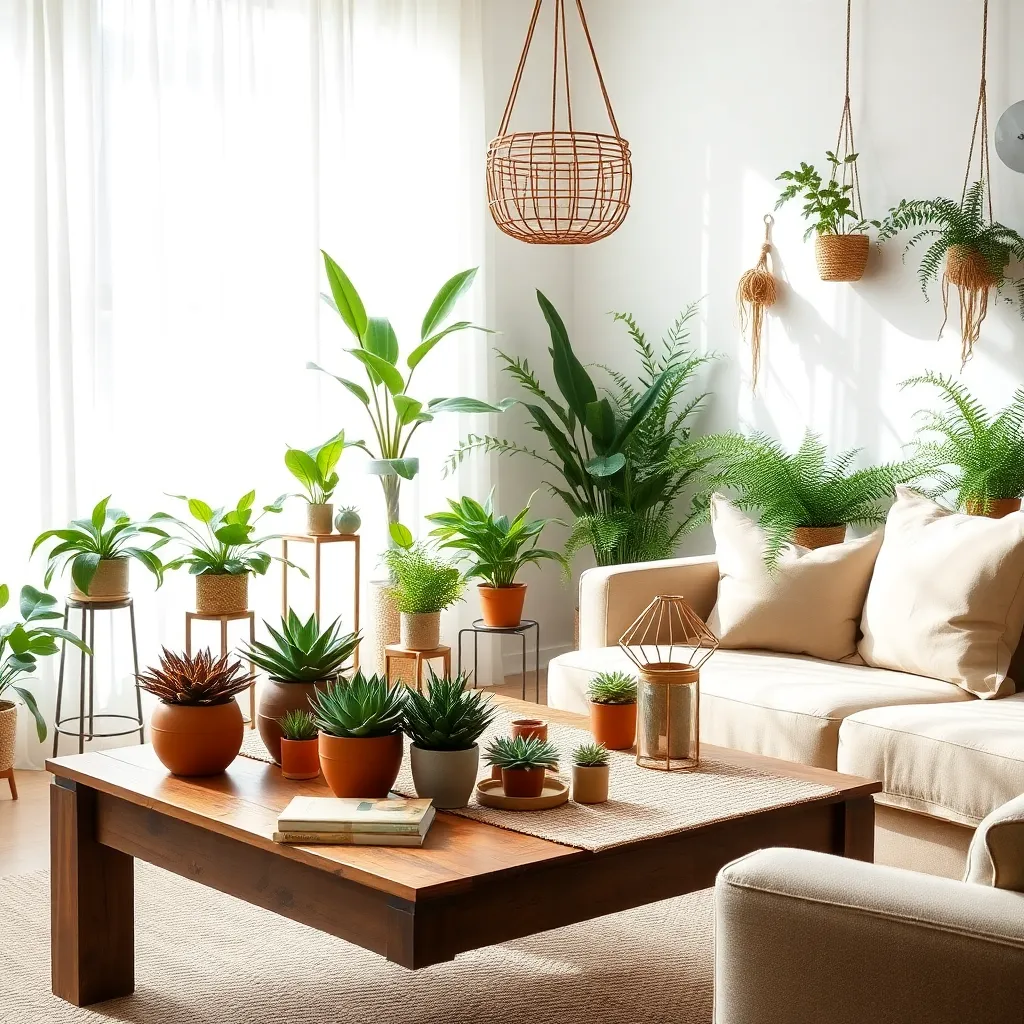
To maintain indoor plants on a budget, start by selecting low-maintenance varieties such as pothos, snake plants, or peace lilies. These plants are not only affordable but also resilient, thriving in a variety of light conditions, which makes them perfect for beginners.
Utilize thrifted or repurposed containers to save money on plant pots. Old mugs, tin cans, or even baskets can be transformed into stylish plant holders with a touch of creativity and some basic DIY skills.
To keep your plants healthy without breaking the bank, use homemade fertilizers like banana peels or coffee grounds. These natural fertilizers provide essential nutrients and can be a sustainable choice compared to expensive store-bought options.
For advanced plant care, consider setting up a simple watering system using recycled materials such as plastic bottles. By creating drip systems or self-watering pots, you ensure that your plants are consistently hydrated, which is especially useful if you travel frequently or have a busy schedule.
Conclusion: Growing Success with These Plants
Incorporating greenery into your interior design doesn’t just rejuvenate your home; it revitalizes your relationships. Throughout this article, we’ve explored five budget-friendly strategies: utilizing indoor plants to foster nurturing habits, creating DIY terrariums that encourage collaborative creativity, choosing air-purifying plants to promote a healthy living environment, using vertical gardens to inspire shared growth, and integrating herbs into your kitchen for delightful, bonding culinary experiences. Each concept not only enhances your home’s aesthetic but also strengthens the bonds within it by promoting collaboration, health, and shared accomplishments.
As your next step, consider starting with a small indoor plant like a succulent to initiate your journey toward a greener, closer-knit home. Feel the joy of nurturing a living thing together, and let that experience enhance your relationship dynamics.
To ensure these ideas are at your fingertips whenever you need a relationship boost, save or bookmark this article for future reference. Remember, incorporating greenery is just the beginning; with each new leaf, you’re cultivating a thriving partnership. Let today be the first step towards a future filled with growth, harmony, and enduring relationship success.
